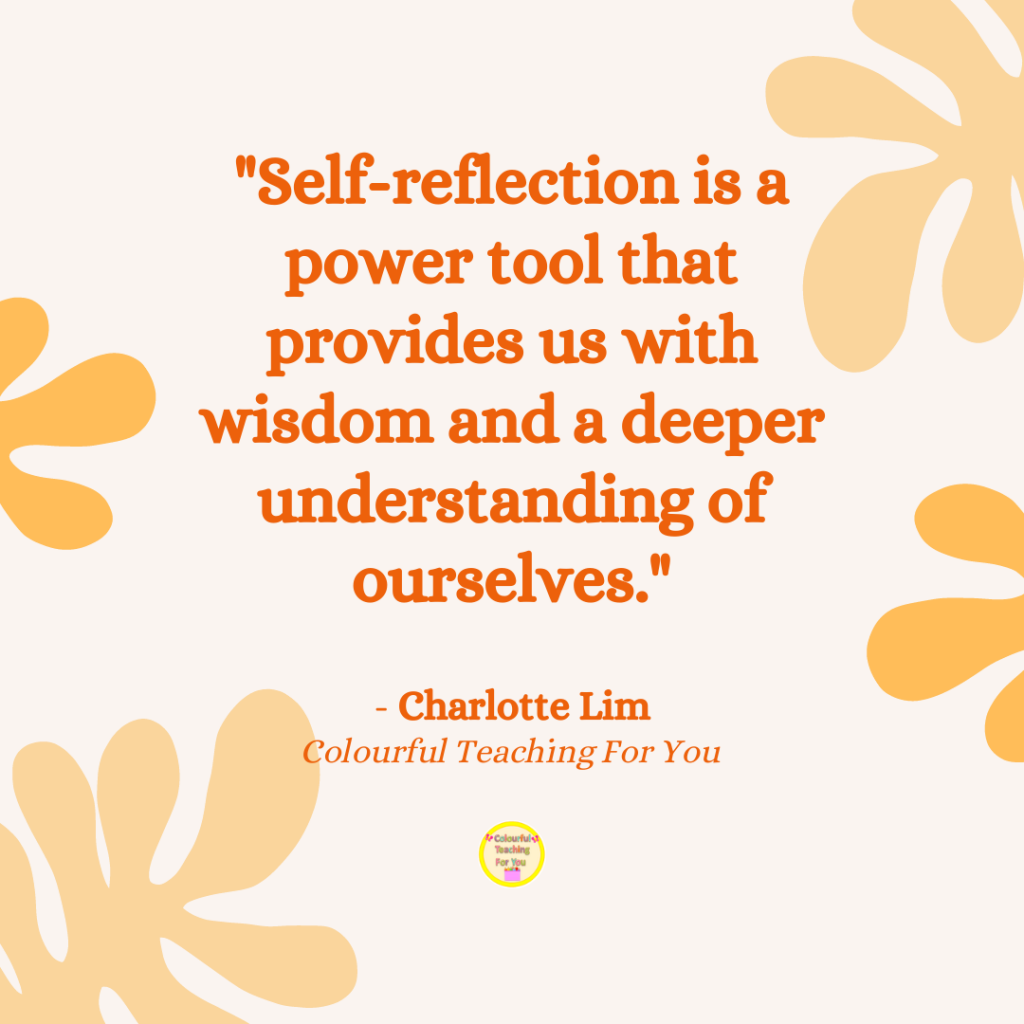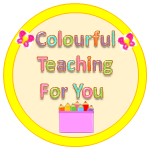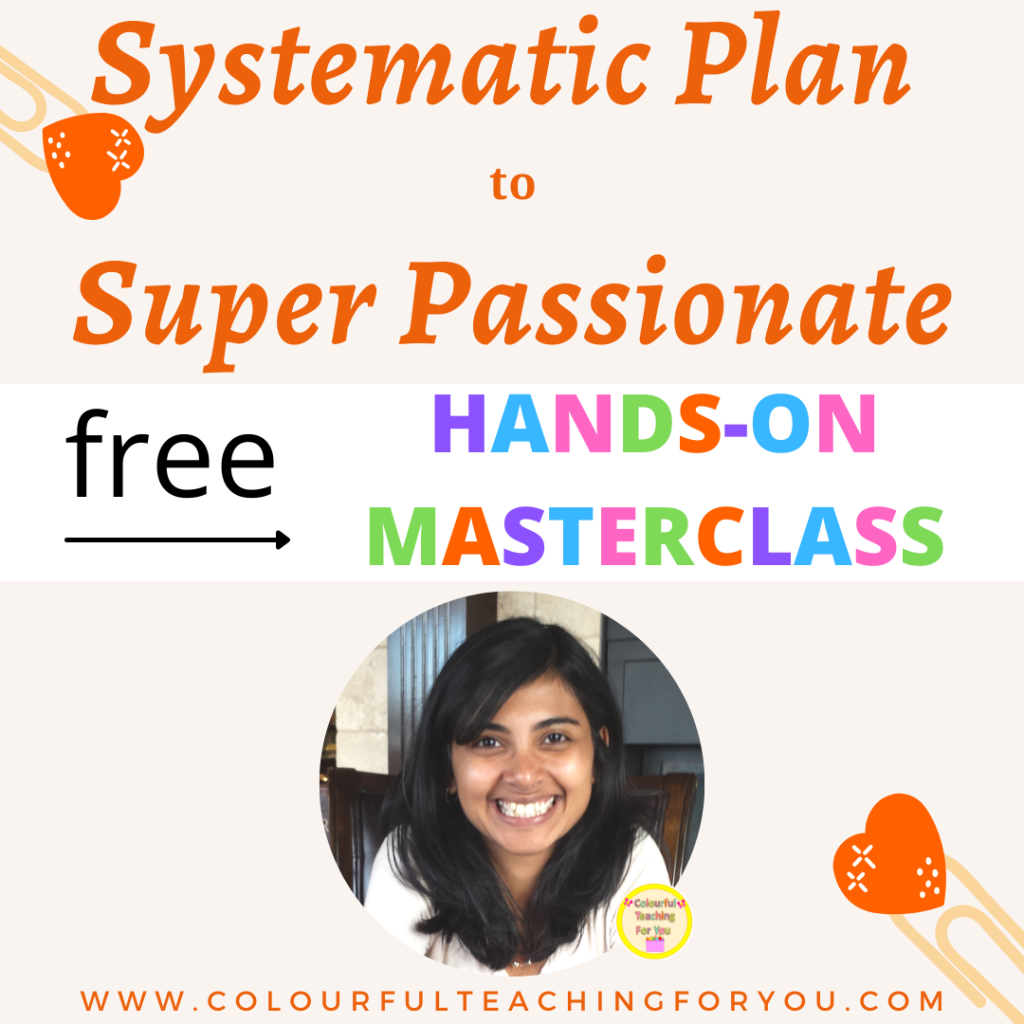
Today we’re going to talk about a One simple way to integrate student self reflection and self assessment with report cards.
While it’s true, that we as parents and educators, know our children, we can’t claim that we know them best. The only people who really know are children the best, is themselves. So, instead of solely basing their report on what we believe about them, we should include their thoughts and feelings.
Giving students a voice on their report cards enables them to see their growth over time. This provides them with the intrinsic motivation that they need to improve and produce their best work.
Before we continue, one way to motivate yourself, is to snag your FREE spot in my upcoming hands-on Masterclass to help you go from feeling overwhelmed to super passionate.
Self-reflection and self-assessment is also an excellent classroom management tool because students will be more engaged in their work as they will have a say in creating goals that meet their social, emotional and learning capabilities.
Additionally, this provides us with a better understanding of our students so that we can best cater to their needs, thereby, deepening the connection between us.

Now that we know the many benefits of integrating our students’ self-reflection and self-assessment into our report cards, let’s look at one simple way that we can integrate it so that it’s seamless for everyone involved.
Actionable Steps:
#1. Step 1: Keep it Gradual
I’ve created core competency journals that children can use over time. Instead of focusing solely on curriculum content, especially for summative report cards, I like integrating competencies as it shows a child’s ability to grow in specific areas that they’re learning. This enables children to look at what they can do instead of what they can’t do it. They understand that learning takes time and the skills necessary to accomplish this does not happen overnight.
Based on the curriculum of a specific term, I choose a broad idea to focus on. For example, I might look at communication for that term. For my younger ones, I use the emoji format but for my older students, I give them a choice of which ones they feel that they want to work on during that term. They then either use the task cards or the journal to reflect on their progress. Depending on the amount of work, the child has put into their reflections and the school’s policy, I either send home copies of their reflections with my report card, or I choose a few points that they made a note of and I integrate them into my report cards. So that parents know they it’s their child’s words and not mine, I use quotation marks. I don’t send home samples of their work as that’s too much to add to a report card but those are kept for Student Led Conferences, which is a topic for a different day.
Recap:
Let’s recap really quickly. Today, we looked at the following:
- We talked about the importance of integrating self-reflections and self-assessments into our report cards.
- We looked at one method to use with formats for different age groups and learning abilities. We said that we would “Keep it Gradual.”
Additional Thoughts:
This form of integrating self-reflections and self-assessments into our report cards is so important in giving our children a voice and choice in their learning. This provides them an incentive and agency over their learning.
If we want to intrinsically motivate our children while keeping them engaged. This is an essential element to integrate into our teaching practice.
Add this to your journaling or writing lesson and you’ll see a massive difference in the way your children engage with their learning.
Next Steps:
If you’d like additional resources for your classroom here are the three ways you can access them: 1) Free Resource Library; 2) At my store; or 3) Systematic Plan to Super Passionate.
If you found this video beneficial, would you do me a favour? Share this with your family, your friends, your loved ones, your co-workers or someone who you think could benefit from this. Thank you!
I’ll see you next Friday at 5:30pm PST.
Until I see you next time, remember to create, experience & teach from the heart.
Take care,
Charlotte



